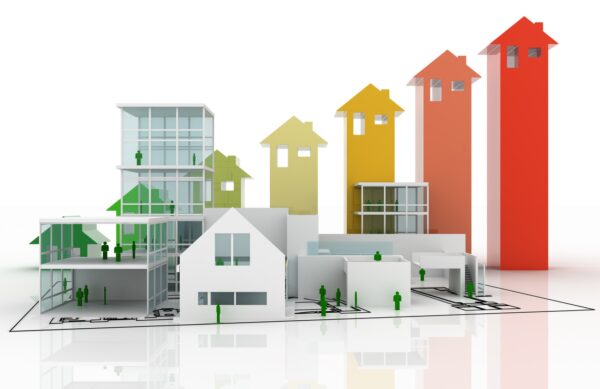
Commercial buildings with energy-efficient features have lower utility costs and higher net profitability. Moreover, energy-efficient features increase occupancy rates and rents and produce a cozy and healthful indoor atmosphere. Buildings that use less energy have better indoor environmental quality (IEQ), boost revenues, and benefit the environment.
- Building Energy Efficiency Requires a Whole-Building Strategy
The whole-building approach views a building as a unified energy system, each component of which influences how well the building functions as a whole. The whole-building strategy utilizes power, water, and other natural resources effectively. Also, it seeks to reduce waste and requires all building experts to be aware of each component that can impact a building’s energy use.
- Materials with High Thermal Mass for Energy-Efficient Construction
Products with high thermal mass play a crucial role in the design of energy-efficient buildings because they regulate temperature changes within a structure by decreasing the rate of heat transfer. High thermal mass materials include concrete. A building made of wood, for instance, would not be energy-efficient because it has a low thermal mass.
- Barrier Against Air and Moisture in Energy-Efficient Buildings
An energy-efficient building’s interior air and moisture penetration must get stopped by an air and moisture barrier. A structure must have continuous insulation (CI) and be airtight to eliminate thermal bridges, according to David goodnight of Austin, Texas. Moisture resistance is essential to prevent the growth of mold, which has the potential to harm a building’s integrity and indoor environment. The outside of a structure’s ability to withstand rainwater can only get improved by a glass rain-screen system.
- The Heating and Cooling System of a Sustainable Building
A business structure uses 34% of its energy for cooling and heating systems. High-efficiency heating and cooling systems should be present in an energy-efficient, according to David goodnight of Austin, Texas.
- Waterproof and insulated slab: the Building Blocks of an Energy-Efficient Structure
Concrete slabs with a continuous layer of rigid foam insulation underneath the slab get utilized to develop an energy-efficient structure. The high thermal mass of concrete retains radiant energy, keeping the inside of a building warm and dry.
- An Energy-Efficient Building’s Lighting
10% of a building’s annual electricity costs go on lighting. Timer, photocell, and dimmer controls can all help you conserve money and energy. Examples of energy-efficient lighting include compact fluorescent lamps (CFLs), light-emitting diodes (LEDs), compact fluorescent lamps (CFLs), and halogen incandescent.
- Smart Building Gadgets Are Part Of Energy-Efficient Building Design
One easy solution to save costs and energy use while enhancing building safety is to incorporate building products into the design of an energy-efficient structure. Occupancy or motion sensors, programmable thermostats, ceiling tiles with integrated air purification systems, and various air quality alarms are examples of building products.
- An Energy-Efficient Building’s Ventilation
Because an energy-efficient building may trap pollutants due to its airtightness, ventilation is essential (like volatile organic compounds, radon, and formaldehyde). An energy recovery ventilation system is a requirement for an energy-efficient building. Spot ventilation, such as exhaust fans in the kitchen and bathroom, and natural ventilation are additional beneficial strategies for an energy-efficient structure.
